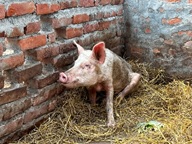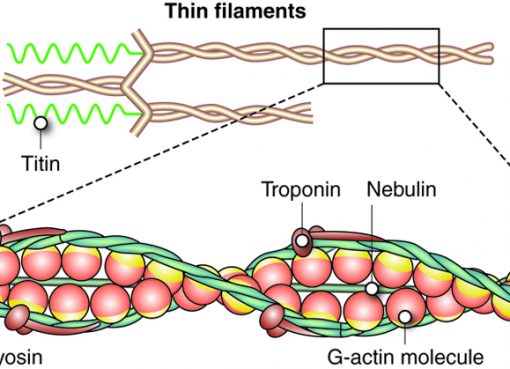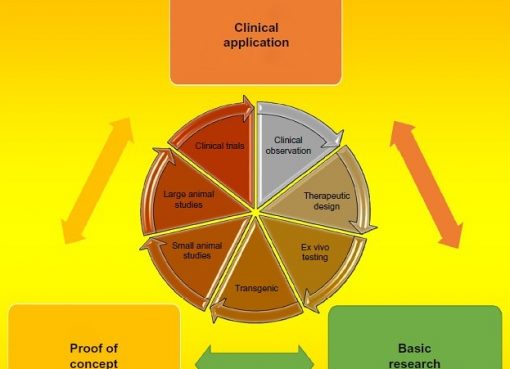Preety Sarmah and Khumbar Debbarma
College of Fisheries, Raha; Assam Agricultural University, Assam
Corresponding author email id:- barkhum9090@gamil.com, preetysarmah5@gmail.com
ABSTRACT
Fish waste, a major byproduct of the fishing and the aquaculture sectors, has substantial environmental and economic concerns. The vast majority of fish waste is now wasted or used for low-value items, resulting in significant financial losses and negative environmental effects. However, recent technological and scientific developments have emphasized fish waste’s potential as a lucrative resource with a high market value. Fish waste has a variety of uses, including manufacturing of fishmeal, fertilizer, and fish oil. The use of fish waste is not only important for environmental sustainability, but it also has substantial economic implications. Developing sustainable fish waste management procedures can create novel businesses and employment opportunities, contributing to the global economy.
Keywords: – Fish waste, Environmental Sustainability, Fishmeal, Fertilizer, Recent technology
INTRODUCTION:
The world is witnessing a substantial increase in global aquaculture output in response to the escalating demands of consumers. The aforementioned surge in global food production has correspondingly resulted in a dramatic escalation in the volume of fishery discards. This poses a significant threat to the integrity of the environment and disrupts the delicate equilibrium of ecosystems. Fishery output was projected to achieve a culmination of 194 million tonnes by the conclusion of the year 2026 (Ganjeh et al., 2023). This surge in fish production necessitates the development and implementation of various strategies to minimize or control the resulting fish waste (Nelluri et al., 2024). The unwanted catch (bycatch) and leftover parts from processing fish (byproducts) contain various portions of the fish’s body, like the head, tail, skin, scales, bones, and internal organs. These parts make up different amounts of the whole fish depending on the species. Approximately 30–50% of the flesh is typically discarded during whole fish filleting; the remaining, approximately 4–5% of skin, 21–25% of head, and 24–34% of bones comprise more than 45% of the whole fish body and are largely underutilized (Ms et al., 2013). A substantial portion of fish processing byproducts finds application in the production of fishmeal, fertilizers, and fish oil, albeit with limited economic return. Additionally, a portion is directly incorporated into aquaculture feed formulations. However, a considerable amount remains unutilized and is ultimately discarded (Guillen et al., 2018). The prevailing paradigm for fish waste management is demonstrably unsustainable and engenders significant environmental, economic, and public health concerns. The implementation of enhanced fish waste management systems has transitioned from a discretionary action to a mandatory requirement. By fostering research and development endeavors, investigating innovative technologies, and establishing appropriate regulations, we possess the capacity to transform this waste stream into a valuable resource.
- Repurposing Fish Waste: Exploring High-Value Products:
The fish processing industry has emerged as a promising field for the valorization of fish wastes and byproducts. These underutilized resources hold significant potential for conversion into various value-added products, which are explained in the following sections.
1.1 Fish meal:
Fish meal and fish oil production account for a significant portion (28%) of the total harvest of fish and shellfish (Bimbo and Crowther, 1992). Fish meal is a dehydrated product characterized by a brownish-gray color and a finely to coarsely ground texture. This processed material results from the extensive removal of water (90-95%) and fat content from the original fish source. The unit operations used in preparation of fish meal is heating, compressing, segregation, evaporation, drying and pounding (Ghaly et al., 2013).
1.2 Fish oil:
Most parts of a fish, from its meat to its fins, hold some amount of fish oil. The amount varies depending on the part. Fish typically contains 2% to 30% fat, and when they’re processed, roughly half of their weight ends up as waste (Ramakrishnan et al., 2013). Fish oil is mostly made up of fat molecules called triglycerides. These triglycerides are like a backbone (glycerol) connected to three fatty acids (which can be similar or different). Fish oil also has some other types of fat molecules, but in smaller amounts, like phospholipids, glycerol ethers, and wax esters (Coppola et al., 2021). Multiple studies have explored various methodologies for extracting fish oil from whole fish or processing byproducts. The optimal extraction technique is contingent upon several factors, particularly the characteristics of the waste material and the intended use of the extracted oil. The most frequent applications for fish oil are biodiesel production and dietary supplements (Kerton et al., 2013; Mendez et al., 2018). The popularity of fish oil comes from the fact that it includes two key polyunsaturated fatty acids (PUFAs) known as EPA and DHA, also known as omega-3 fatty acids. The two primary applications for PUFAs are feed/food ingredients and biofuel generation. In addition to its established uses, waste fish oil can also be employed to induce the production of enzymes by bacteria (Esakkiraj et al., 2010). Expanding the potential uses of fish waste oil, recent research explores its effectiveness as a fat liquoring agent in the leather industry (Saranya et al., 2020).
1.3 Collagen and Gelatin:
Projecting a strong growth trajectory, the marine collagen market is expected to reach nearly USD 1 billion by 2025. This surge, driven by a Compound Annual Growth Rate (CAGR) of 7.4%, can be attributed to the increasing applications of collagen in cosmetics, food, and beverages (Saranya et al., 2020). Notably, fish waste presents a significant and cost-effective source of collagen for this flourishing industry (Jafari et al., 2020). Fish skin and bones are a rich source of collagen, constituting a remarkable 30% of their total protein content (Ferraro, 2010; Wangkheirakpam, 2019). Collagen, a ubiquitous protein family, represents approximately 30% of the total protein content in most vertebrates. It is the basic building block of the extracellular matrix (ECM) in connective tissues like skin, tendons, ligaments and bones. Fish collagen is classified based on its structural properties, with kinds I and II being the most significant for cosmetic and regenerative medicine (wound healing) applications (Karim et al., 2009). Gelatin is produced by two important processes: partial hydrolysis (breakdown) and heat denaturation (structural modification) of collagen. This technique produces two separate varieties of gelatin: type A, acquired through acid hydrolysis, and type B, obtained by alkaline hydrolysis (Mariod et al., 2013). Several techniques have been developed for extracting collagen from fish waste. The most common procedure is acid extraction, which uses acids such as acetic or hydrochloric acid. The resultant substance is known as acid-soluble collagen. An alternative approach involves pepsin extraction. Here, the fish waste is treated with pepsin and the collagen extracted through this method is referred to as pepsin-soluble collagen (PSC) (Jafari et al., 2020). Tissue engineering holds immense promise, and collagen stands out as the most promising natural building block for scaffolds in this field (Xu et al., 2020). Beyond its use in scaffolds, another captivating aspect of collagen lies in its potential as a biomaterial for wet wound dressings (Parenteau-Bareil et al., 2010). Research has revealed the intriguing antioxidant properties of fish collagen, which opens up possibilities for its application in various fields, including food preservation, healthcare, and cosmetics (Coppola et al., 2021). Fish collagen derived from waste offers other possibilities as a food additive and packaging material (Coppola et al., 2020). Studies have shown its effectiveness as a yogurt additive (Shori et al., 2020), where it influences milk protein breakdown and imparts properties that inhibit angiotensin I-converting enzyme (ACE), potentially contributing to blood pressure regulation.
1.4 Chitin and Chitosan:
Chitosan, a substance with antibacterial and antifungal properties, is widely used in many everyday products like antiseptics, food, cosmetics, medications, and textiles. Chitin, a linear polysaccharide composed of N-acetyl-β-D-glucosamine units linked by β-(1→4) glycosidic bonds, exhibits a white or off-white coloration in its purified state and is devoid of any significant odor or taste (Cheba et al., 2011). A crucial derivative of chitin is chitosan. This substance is obtained through the deacetylation process, resulting in a molecular structure predominantly composed of 2-amino-2-deoxy-D-glucopyranose units (Airoldi et al., 2008). Crystalline chitin can be classified into three distinct forms: α, β, and γ (Shahidi et al., 2019). This categorization is based on the varying arrangements of chitin chains within their crystalline regions. Each form imparts unique properties to the overall chitin structure. Additionally, the degree of deacetylation (removal of acetyl groups) can further influence these properties (Campana et al., 2007). The standard protocol for chitin extraction necessitates the elimination of extraneous biomolecules. This process is achieved through a sequential two-step chemical treatment. The first step, known as deproteinization, targets the removal of proteins. Subsequently, demineralization is employed to eliminate inorganic constituents. In certain instances, an optional decolorization/deodorization step may be incorporated to remove pigments and enhance the final product purity (Moura, 2006; Battisti, 2007). Chitin and chitosan, the widely distributed marine polysaccharides, have garnered significant scientific interest in recent years for their potential applications in the food, pharmaceutical, and healthcare sectors. These applications are driven by the unique biological and physicochemical properties exhibited by these polysaccharides (Ferraro et al., 2010). Notably, the adhesive nature of chitin and chitosan, coupled with their antioxidant and antimicrobial properties, makes them particularly valuable for biomedical and pharmacological applications, as well as in the food industry for use as food additives and packaging materials (Jayakumar et al., 2011).
1.5 Fish enzymes:
Byproducts generated during fish processing, including viscera, liver, head, and shells, represent a valuable source of enzymes. These enzymes, such as proteases, lipases, and transglutaminases (TGases), exhibit physicochemical properties, particularly optimal pH and temperature, that are comparable to those found in enzymes derived from terrestrial animals (Stefansson, 1998; Venugopal, 2009; Trincone, 2011). Enzymes can be used to isolate proteins and marine oils from fish waste, enhancing their quality and nutritional value. Fish waste-derived enzymes have been demonstrated as effective tools for the production of bioactive peptides, exhibiting promising health benefits. Enzymes can accelerate traditional fermentation processes, improving the efficiency and quality of fermented products. Additionally, enzymes can streamline the processing of both shellfish and finfish. In the case of shellfish, enzymes can facilitate the removal of shells and membranes, while for finfish, they can aid in scale removal, ultimately improving palatability and processing ease. Furthermore, enzymes can be used to extract flavors from fish waste, enhancing the taste and aroma of seafood products. Enzymes can also be used to extend the shelf life of seafood products by controlling spoilage and preventing off-odors. (Venugopal et al., 2016).
CONCLUSION:
Fish waste, traditionally considered a byproduct, has emerged as a lucrative resource with the potential to transform a variety of sectors. This review has looked at several ways to use fish waste, ranging from traditional techniques like fishmeal manufacturing to cutting-edge biomedical uses. It supports environmental sustainability by diverting waste from landfills and lowering reliance on wild fish populations for fishmeal. It has the potential to generate new economic prospects for the fishing sector while also encouraging innovation in the production of high-value items. However, issues persist. It is critical to refine existing technologies and devise more effective methods of waste accumulation and processing. In addition, consumer education and market growth are critical for ensuring wider adoption of these sustainable practices.
Looking ahead, fish waste utilization offers a lot of promise. By encouraging innovation and cooperation, we can turn this waste stream into a source of opportunity, assuring a more sustainable and prosperous future for the oceans and the environment.
REFERENCES:
Airoldi, C. (2008). The weighty potentiality of nitrogenated basic centers in inorganic polymers and biopolymers for cation removal. Quím. Nova. 31: 144–153.
Battisti, M. and Campana, S. (2007). Preparation and characterization of α-chitin and chitosan from the shells of Macrobrachium rosembergii. Quím. Nova. 31: 2014–2019.
Bimbo, A. P. and Crowther, J. B. (1992). Fish meal and oil: Current uses. Journal of the American Oil Chemists Society. 69(3): 221–227.
Bonilla-Méndez, J.R. and Hoyos-Concha, J.L. (2018). Methods of extraction, refining and concentration of fish oil as a source of omega-3 fatty acids. Corpoica Cienc. Tecnol. Agropecu. 19: 645–668.
Campana-Filho, S.P.; Britto, D.; Curti, E.; Abreu, F.R.; Cardoso, M.B.; Battisti, M.V.; Sim, P.C.; Goy, R.C.; Signini, R. and Lavall, R.L. (2007). Extraction, structures and properties of a- and b-chitin. Quím. Nova. 30: 644–650.
Cheba, B.A. (2011). Chitin and Chitosan: Marine Biopolymers with Unique Properties and Versatile Applications. Glob. J. Biotechnol. Biochem. 6: 149–153.
Coppola, D.; Lauritano, C.; Palma Esposito, F.; Riccio, G.; Rizzo, C. and de Pascale, D. (2021). Fish Waste: From Problem to Valuable Resource. Mar. Drugs. 19: 116.
Coppola, D.; Oliviero, M.; Vitale, G.A.; Lauritano, C.; D’Ambra, I.; Iannace, S. and De Pascale, D. (2020). Marine Collagen from Alternative and Sustainable Sources: Extraction, Processing and Applications. Mar. Drugs. 18: 214.
Esakkiraj, P.; Rajkumarbharathi, M.; Palavesam, A. and Immanuel, G. (2010). Lipase production by Staphylococcus epidermidis CMST-Pi 1isolated from the gut of shrimp Penaeus indicus. Ann. Microbiol. 60: 37–42.
Ferraro, V.; Cruz, I.B.; Jorge, R.F.; Malcata, F.X.; Pintado, M.E. and Castro, P.M. (2010). Valorisation of natural extracts from marine source focused on marine by-products: A review. Food Res. Int. 43: 2221–2233.
Ganjeh, A. M.; Saraiva, J. A.; Pinto, C. A.; Casal, S. and Silva, A. M. (2023). Emergent technologies to improve protein extraction from fish and seafood by-products: an overview. Applied Food Research, Article 100339.
Ghaly, A. E.; Ramakrishnan, V. V.; Brooks, M. S.; Budge, S. M. and Dave, D. (2013). Fish processing wastes as a potential source of proteins. Amino acids and oils: a critical review. Journal of Microbial & Biochemical Technology. 5(4): 107–129.
Guillen, J.; Holmes, S.J.; Carvalho, N.; Casey, J.; Dörner, H.; Gibin, M.; Mannini, A.; Vasilakopoulos, P. and Zanzi, A. (2018). A Review of the European Union Landing Obligation Focusing on Its Implications for Fisheries and the Environment. Sustainability 10: 900.
Jafari, H.; Lista, A.; Siekapen, M.M.; Ghaffari-Bohlouli, P.; Nie, L.; Alimoradi, H. and Shavandi, A. Fish Collagen: Extraction, Characterization, and Applications for Biomaterials Engineering. Polymers. 12: 2230.
Jayakumar, R.; Prabaharan, M.; Kumar, P.S.; Nair, S. and Tamura, H. (2011). Biomaterials based on chitin and chitosan in wound dressing applications. Biotechnol. Adv. 29: 322–337.
Karim, A. and Bhat, R. (2009). Fish gelatin: Properties, challenges, and prospects as an alternative to mammalian gelatins. Food Hydrocoll. 23: 563–576.
Kerton, F.M.; Liu, Y.; Omari, K.W. and Hawboldt, K. (2013). Green chemistry and the ocean-based biorefinery. Green Chem. 15: 860–871.
Mariod, A. and Fadul, H. (2013). Review: Gelatin, source, extraction and industrial applications. ACTA Sci. Pol. Technol. Aliment. 12: 135–147.
Moura, C.; Muszinski, P.; Schmidt, C.; Almeida, J. and Pinto, L. (2006). Obtainment of chitin and production of chitosan from residues of shrimp and crab. Vetor 16: 37–45.
Ms, R.V.B. and Al Hattab, A.G.A.A.H.M. (2013). Fish processing wastes as a potential source of proteins, amino acids and oils: A critical review. J. Microb. Biochem. Technol. 5: 107–129.
Muñoz, I.; Rodríguez, C.; Gillet, D. and Moerschbacher, B.M. (2018). Life cycle assessment of chitosan production in India and Europe. Int. J. Life Cycle Assess. 23: 1151–1160.
Nelluri, P.; Rout, R. K.; Tammineni, D. K.; Joshi, T. J. and Sivaranjani, S. (2024). Technologies for management of fish waste & value addition. Food and Humanity, 2: 100228.
Parenteau-Bareil, R.; Gauvin, R. and Berthod, F. (2010). Collagen-Based Biomaterials for Tissue Engineering Applications. Materials. 3(3): 1863–1887.
Ramakrishnan, V. (2013). Extraction of Proteins from Mackerel Fish Processing Waste Using Alcalase Enzyme. J. Bioproces. Biotechniq. 3: 2.
Saranya, R.; Selvi, A.T.; Jayapriya, J. and Aravindhan, R. (2020). Synthesis of Fat Liquor Through Fish Waste Valorization, Characterization and Applications in Tannery Industry. Waste Biomass Valorization. 11: 6637–6647.
Shahidi, F.; Varatharajan, V.; Peng, H. and Senadheera, R. (2019). Utilization of marine by-products for the recovery of value-added products. J. Food Bioact. 6: 10–61.
Shori, A.B.; Ming, K.S. and Baba, A.S. (2020). The effects of Lycium barbarum water extract and fish collagen on milk proteolysis and in vitro angiotensin I-converting enzyme inhibitory activity of yogurt. Biotechnol. Appl. Biochem. 68: 10.1002.
Stefansson, G. (1998). Enzymes in the fishing industry. Food Technology. 42(3): 64–68.
Trincone, A. (2011). Marine biocatalysts: Enzymatic features and applications. Marine Drugs. 9: 478–499.
Venugopal,V. (2016). Enzymes from Seafood Processing Waste and Their Applications in Seafood Processing. Advances in Food and Nutrition Research. 78: 47–69.
Venugopal, V. (2009). Marine products for healthcare: Functional compounds and bioactive nutraceuticals from the Ocean. Boca Raton: CRC Press. Chapter 3: 48-64.
Wangkheirakpam, M.R.; Mahanand, S.S.; Majumdar, R.K.; Sharma, S.; Hidangmayum, D.D. and Netam, S. (2019). Fish waste utilization with reference to fish protein hydrolisate-A review. Fish. Technol. 56: 169–178.
Xu, Y.; Duan, L.; Li, Y.; She, Y.; Zhu, J.; Zhou, G.; Jiang, G. and Yang, Y. (2020). Nanofibrillar Decellularized Wharton’s Jelly Matrix for Segmental Tracheal Repair. Adv. Funct. Mater. 30: 1910067.




